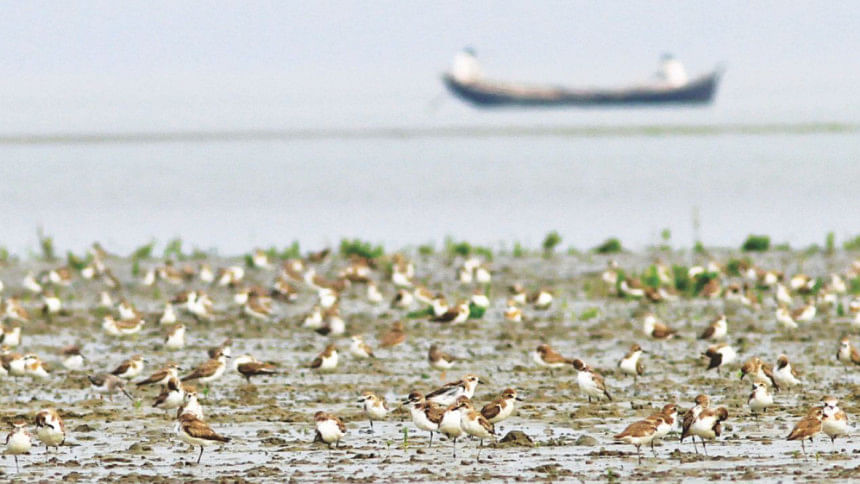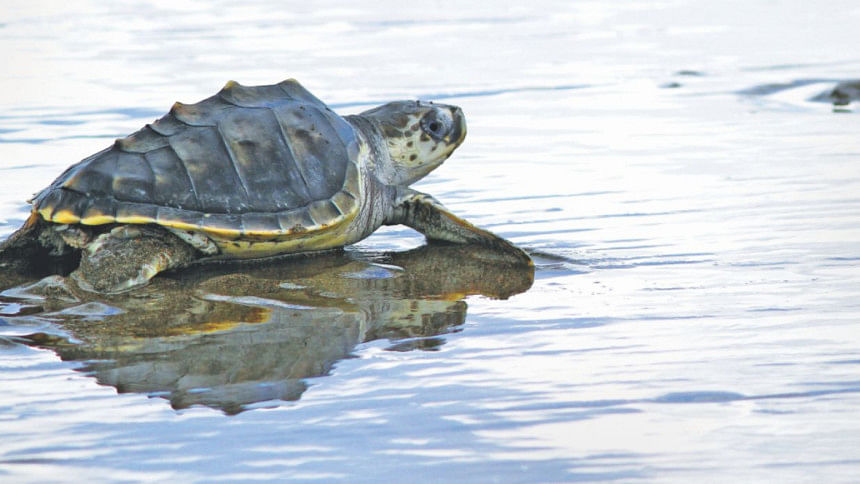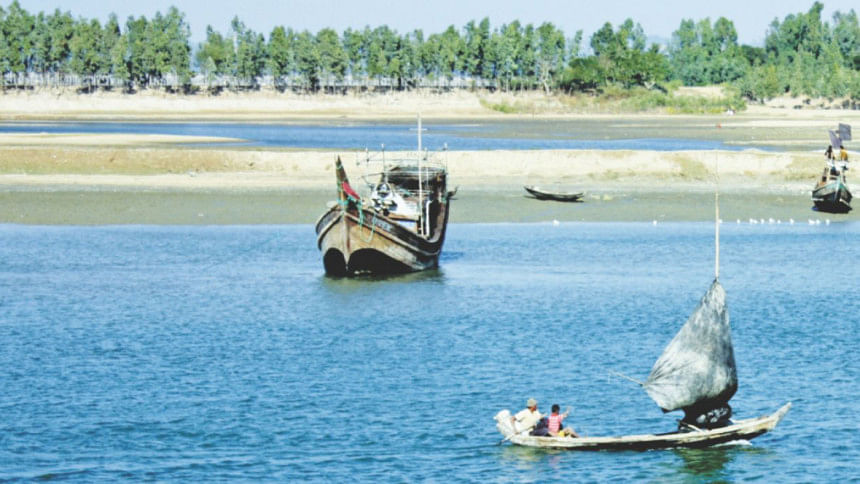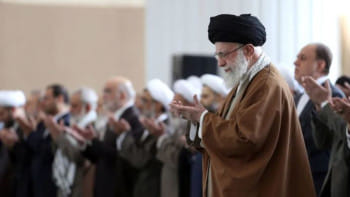Coast or Construction?

The Yamaha engine sputters before giving life to the speedboat which swerves a sharp right and zooms past the zigzag of large fishing trawlers, the smell of dried fish, and sea salt heavy in the air. Within a few minutes on the steely-grey ocean expanse, the green speck of Moheshkhali appears. Planted mangroves lend this place a Sundarbans-like feel.
Things in this island town are on a fast pedestal of change. The pristine landscape is set to become the energy hub of Bangladesh. Coal power plants, deep sea ports, LNG pipelines and floating storage units, unrefined fuel terminal—you name it, and this island will likely have it.
On paper, the Matarbari Coal Power Plant appears to tick the right boxes. Elaborate environmental management plans and mitigation measures are mapped out.
But Bangladesh has a poor reputation when it comes to translating plans into reality. Take for example, Barapukuria Coal Mining Company Limited. Just last month, villagers brought out a demonstration in the area demanding compensation for land subsidence. For years, locals have complained that mining has compromised their soil fertility. Or look at our eco-tourism promises. One visit to Karamjal in Sundarbans and that myth, too, is busted. Huge ships bring in tourists by the dozens almost everyday during peak-season. They blare loud music and leave behind waste. All in all, the whole process is very poorly managed.
Built by the sea in Moheshkhali upazila of Cox's Bazar, the Matarbari Coal Power Plant is a Japan-funded mega project with the capacity of turning over 1200 MW electricity into the national power grid. In a country starved for power, this is crucial.
The plant could have devastating impacts on the environment, despite the Environmental Management Plan and mitigation measures laid out in the Environment Impact Assessment (EIA) report approved by Bangladesh government's Department of Environment (DoE) on October 10, 2013.
“Coal will be transported through the sea and unloaded through a deep-sea port. This means a huge number of large commercial coal-laden vessels will navigate on the sea-route,” says Dr. Abdullah Harun Chowdhury, Professor of Environmental Science Discipline in Khulna University.
Along with the usual misgivings of a coal-based power plant—air and noise pollution, solid waste production—for Matarbari, there is the added worry of the impact on marine resources posed by thermal pollution. The water discharged into the sea will likely be at a higher temperature. According to the EIA of the power plant, the discharged water will be around 40oC, six degrees higher than the water temperature. Although the EIA mentions that this is well within the range of water quality standards, experts note that this will still disturb nutrient mixing and levels of dissolved oxygen in the water.
This will also affect fish resources in the water adversely. Fishes usually spawn in the submerged root network of the nearby mangrove patches and the shallow waters of the bay.

Any coal-based power plant, even with its “super-critical technology”, elaborate and promising environment management plans, will have dire impacts on the environment and the ecosystem.
Even the EIA of the Matarbari Coal Power Plant, a document which is always on the receiving end of severe criticism, found that the front beach area of the plant is habitat to at least four species of turtles, of which one—Hawksbill Turtle—is “Critically Endangered” on the IUCN Red List of Threatened Species. If further degradation of its habitat occurs, it will soon be declared “Extinct in the Wild”.
Mitigation plans have been prescribed to reduce impacts on these four species of sea turtles listed in the IUCN Red List that spawn at the sea-front area of the power plant. This includes—minimising impact of light, especially at night, using low-wattage light, red or yellow lights and lowering noise levels.
"This is a huge factory and during operation phase there will be loads of people, increased sound and light, definitely on a much larger scale than it is now, which will adversely impact the habitat of the turtle species that spawn here," says Alifa Bintha Haque, lecturer at the Department of Zoology at Dhaka University.
"There is a possibility of thermal pollution and when the temperature of the sand where the turtles spawn, rises even by a degree, it can potentially change the sex of the turtles. A degree higher temperature and all turtles are born females. We have seen this in other parts of the world."
Baby turtles are also extremely sensitive to light. Remember the finale of the Planet Earth II 'Cities', where turtle hatchlings instead of heading into the sea, were disoriented by the city lights and started walking towards the bustling traffic? The same risk—that of artificial lights—applies here too.
Then there is Sonadia Island, an Ecologically Critical Area (ECA), nearby. Just 15 kilometres away from the construction site. The island is currently free from anthropogenic impacts such as development and tourism. But nearby, Matarbari Coal Power Plant and plans for eco-tourism projects have now put this biodiversity hotspot at a risk too.
“The Bangladesh Environment Conservation Act, 1995 and the Department of Environment (DoE) guideline in this regard were formulated in 1995 but back then, environmental concepts and concern for the environment was not as it is today. Thus, the weak laws that we have in place are not really applicable in this time and age. Just in neighbouring India, the National Thermal Power Guideline has set a distance limit of at least 20-25km from ecologically sensitive or critical areas. But here, in Bangladesh it is merely 10 kilometres!” says Dr Harun. These are all tidal areas and pollution effects even from a distance of 10 or 15 kilometres will still spread rapidly, opines Dr Harun.

The EIA, however, says that the impact to Sonadia will be insignificant.
Unique in its features—sandy beach, mudflats, near-shore sandbars, high dunes and mangrove formations, environmentalists believe Sonadia could be virtually lost thanks to ambitious construction plans.
“Sonadia Island is home to many globally threatened species including the critically endangered Spoon-billed Sandpiper (only 200 pairs are left in the world) who rely on the ocean water, mudflats and sand,” says Sayam U Chowdhury, Conservation Biologist, working on threatened species in Bangladesh.
“If the environment management plans of Matarbari Coal Power Plant fail or if any accident occurs during operation phase or construction phase, the critically endangered Spoon-billed Sandpiper along with 27 other species of shorebirds will be affected. Moreover, Sonadia is a key nesting area for turtles; water contamination will pose a huge threat to all creatures that are dependent on tidal water.”
Coupled with the threat of coal-based power plants in its near vicinity, Sonadia is being surveyed to check its feasibility to establish an Ecotourism zone there. Bangladesh Economic Zone Authority (BEZA) Executive Chairman Paban Chowdhury claims that utmost care will be taken to minimise the environmental impact from establishing a tourism zone in this area.
“Only the area in front of the sandy beach will be utilised. Other areas will be left as it is. None of the mangrove forest will be affected,” he says.
The Civil Aviation and Tourism Ministry in 2012 had declared Sonadia Island as an exclusive tourism zone, says Paban.
“Hotels and other facilities that meet international standards will be built here. However, the hotels will not be high-rise buildings. There will also be facilities for water sports and cruise,” he adds.
While the plan to leave ecologically sensitive areas untouched is promising, conservationist Sayam U Chowdhury continues to be concerned about the long-term impacts.
Bangladesh's past experiences with tourism cast a shadow on future plans. Consider St Martin's Island, we have practically exhausted natural resources in the island. Everywhere you look, tourists throng the island by the hundreds and as they leave, a trail of packets of chips and plastic straws are left behind.
“It is important to understand that mudflats and sand dunes of Sonadia Island are globally significant, compared to the restored mangroves. Losing mudflats is an irreversible loss. You cannot make a mudflat. Lose them, and you lose habitats of threatened birds, fish, local livelihood and turtles,” says Sayam.

Marine resources will be affected and the services provided by intertidal mudflats will also be nullified. They recycle carbon and provide spawning and feeding grounds for fish.
The creeks, channels, and near shore and offshore areas of Sonadia Island support at least four species of globally threatened coastal and marine cetaceans, including Finless porpoise Irrawaddy dolphin, Bottlenose dolphin and Indo-Pacific Humpback dolphin, according to an article by Zahirul Islam of MarineLife Alliance. All are listed in the IUCN Red List. Here in this island, the threatened Olive Ridley and Green turtle also nest.
Everywhere, development is at a face-off with the environment. The question then arises, is development necessary? But at what cost?
“All developed countries now protect their natural areas, after learning from their mistakes. If we have to repeat the same mistakes then we will have nothing left to protect in this highly populated land when we understand the value of nature in say 50 years from now. China and even Myanmar are now genuinely committed to protect their coasts and coastal mudflats, and all key areas from any kind of coastal development,” says Sayam.
Development is necessary but we must protect nature for our own good, destroying every natural area in the name of development will only spell suicide in the long-run.
Note: The EIA Report of Matarbari Coal Power Plant was submitted to DoE by Coal Power Generation Company of Bangladesh Limited and was conducted by Tokyo electric Power Services Co. Ltd (TEPSCO), Japan International Cooperation Agency Study Team.

 For all latest news, follow The Daily Star's Google News channel.
For all latest news, follow The Daily Star's Google News channel. 



Comments